Photos: Oldest Known Horned Dinosaur in North America
A fossilized skull unearthed in Montana is the oldest horned dinosaur on record in North America, a new study finds. The species likely migrated to the continent from Asia on an ancient land bridge across the Pacific Ocean, the researchers said. Though small in size, the new discovery will help paleontologists learn about the history of horned dinosaurs. [Read full story on the horned dinosaur, Aquilops americanus]
Ancient ground
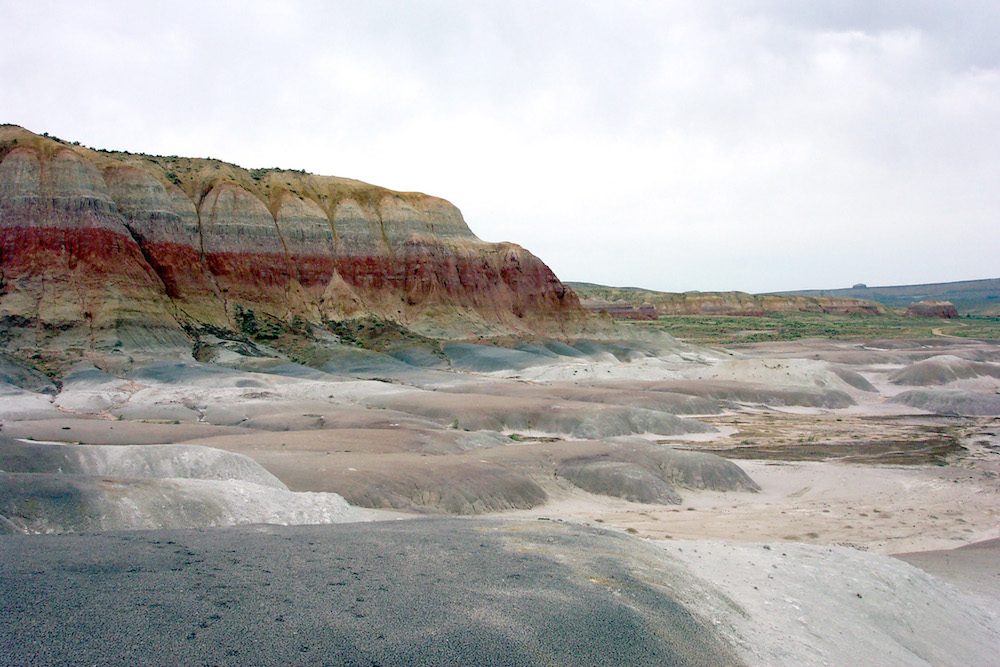
Rocks at the Cloverly Formation in Montana where researchers found Aquilops in 1997. When people think about dinosaurs in North America, they tend to think about Triceratops and Tyrannosaurus Rex, which are from the Late Cretaceous.
"One thing paleontologists have been doing lately is trying to figure out where the late Cretaceous dinosaurs came from," said Lindsay Zanno, an assistant research professor of paleontology at North Carolina State University, who was not involved in the study. "Did they get to North America or did they evolve here?"
The new finding suggests that the animals migrated here from Asia, she said. (Photo credit: Brian Davis)
Family tree
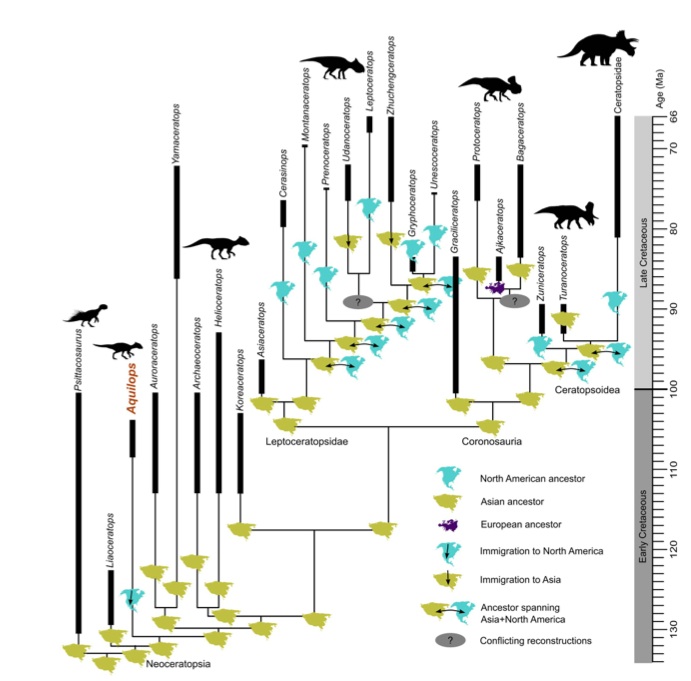
The fossilized skull suggests that Aquilops americanus is an early member of the horned dinosaur family tree, and likely migrated across a land bridge from Asia to North America during the early Cretaceous, between 113 million and 105 million years ago. (Image Credit: Andrew Farke et al., PLOS ONE)
Sign up for the Live Science daily newsletter now
Get the world’s most fascinating discoveries delivered straight to your inbox.
Tiny skull
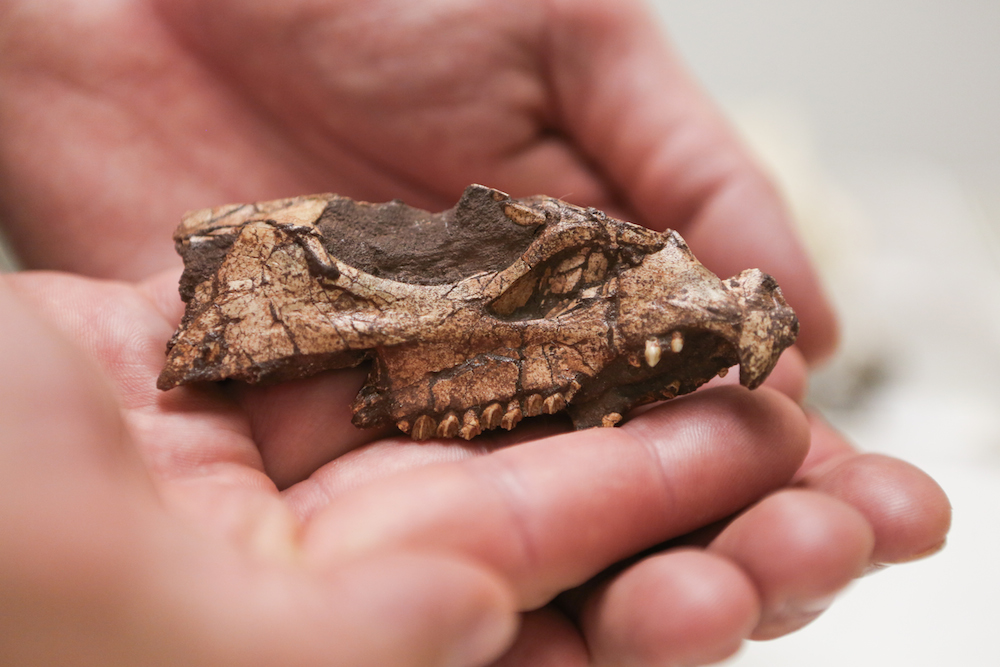
The skull of Aquilops americanus, a new species of herbivorous dinosaur. Although it doesn't have horns, it is a neoceratopsian, known as a horned dinosaur.
"It's from the time before horned dinosaurs became horned," said the study's lead researcher, Andrew Farke, a paleontologist at the Raymond M. Alf Museum of Paleontology, in Claremont, California. (Photo credit: Scott Nichols, courtesy Raymond M. Alf Museum of Paleontology)
Distant relatives
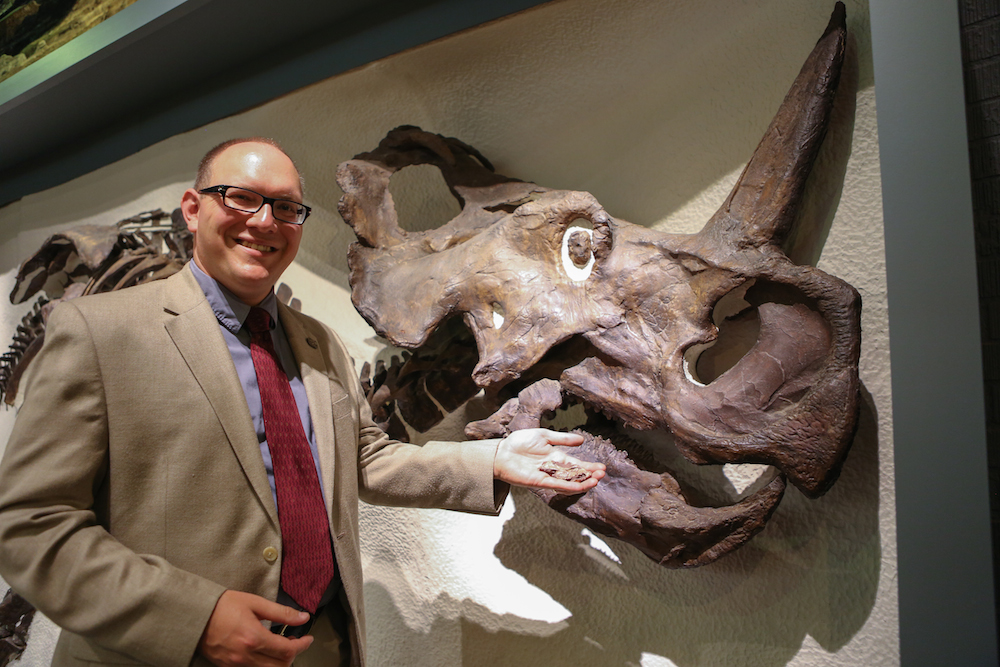
Andy Farke shows that Aquilops americanus is substantially smaller than its distant North American relative Triceratops (Centrosaurus), which lived about 40 million years later. (Photo credit: Scott Nichols, courtesy Raymond M. Alf Museum of Paleontology)
Ancient Montana
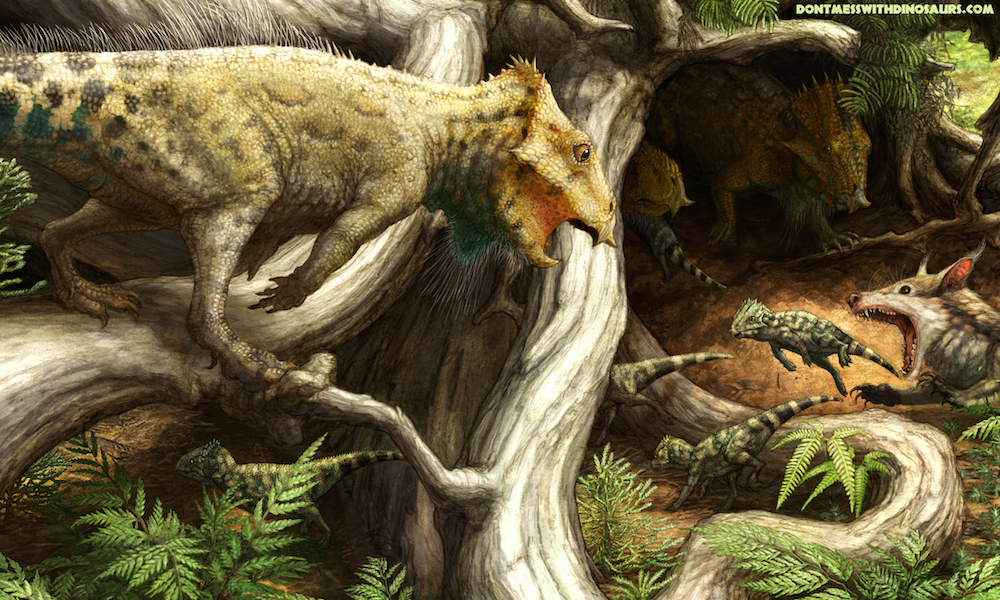
An artist's interpretation of Aquilops americanus with its young in Montana during the Early Cretaceous period, about 107 million years ago. (Image credit: © Brian Engh, courtesy of Raymond M. Alf Museum of Paleontology)
Curious creature
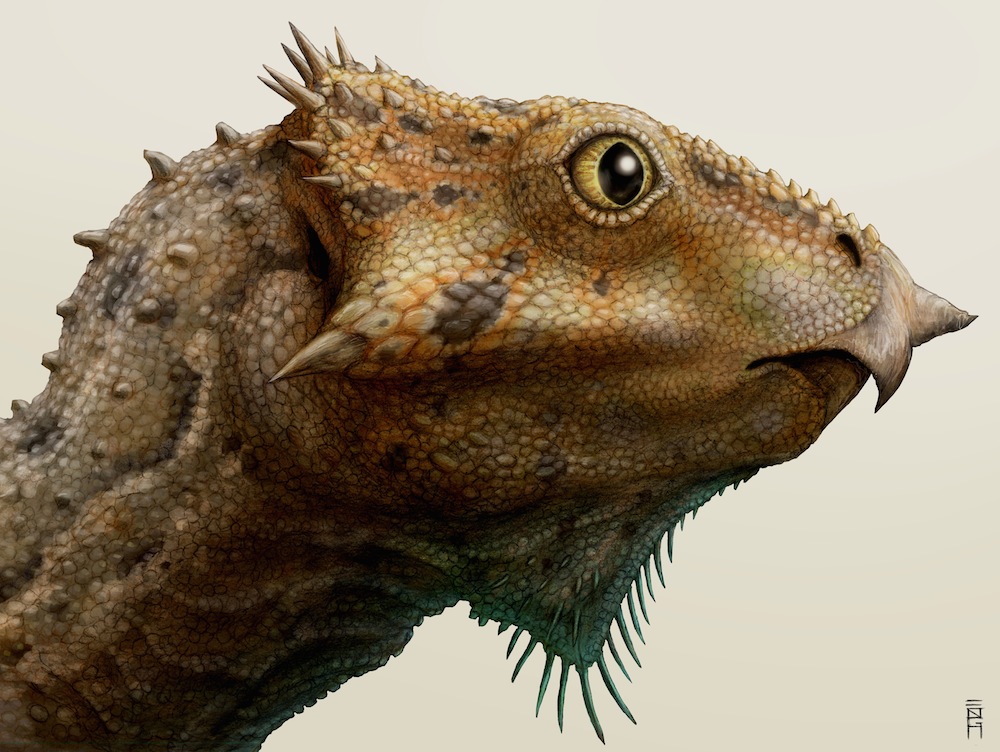
An artist's reconstruction of Aquilops, which includes a rostral beaked bone and spikes on the cheeks. The spikes may have served as decoration, or as a way to keep predators at bay, Farke said. (Image credit: © Brian Engh, courtesy of Raymond M. Alf Museum of Paleontology)
Pet-size dinosaur
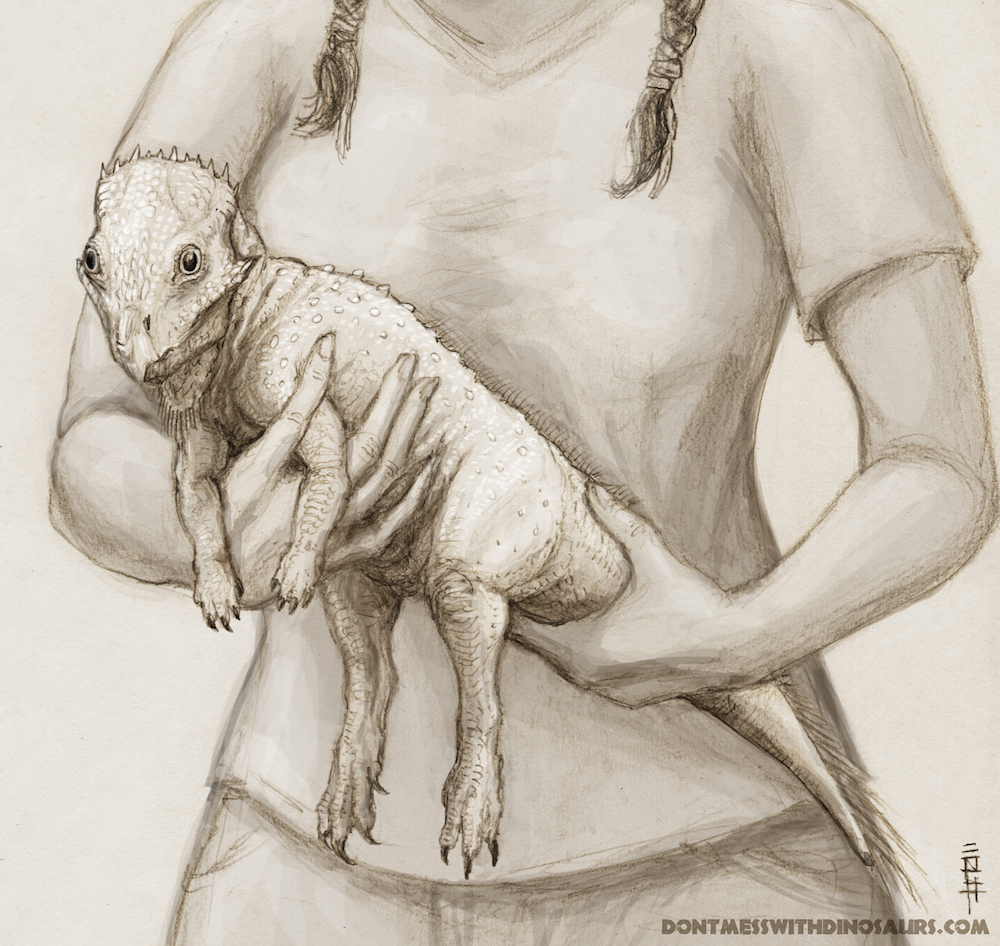
Aquilops wasn't as large as Triceratops, its North American horned dinosaur relative, and could easily be carried by a person today.
"You can almost hold it in your hand," said Michael Ryan, a horned dinosaur expert at the Cleveland Museum of Natural History, who was not involved in the study. "It's probably a little bit bigger than a Chihuahua." (Image credit: © Brian Engh, courtesy of Raymond M. Alf Museum of Paleontology)
Vegetarian teeth
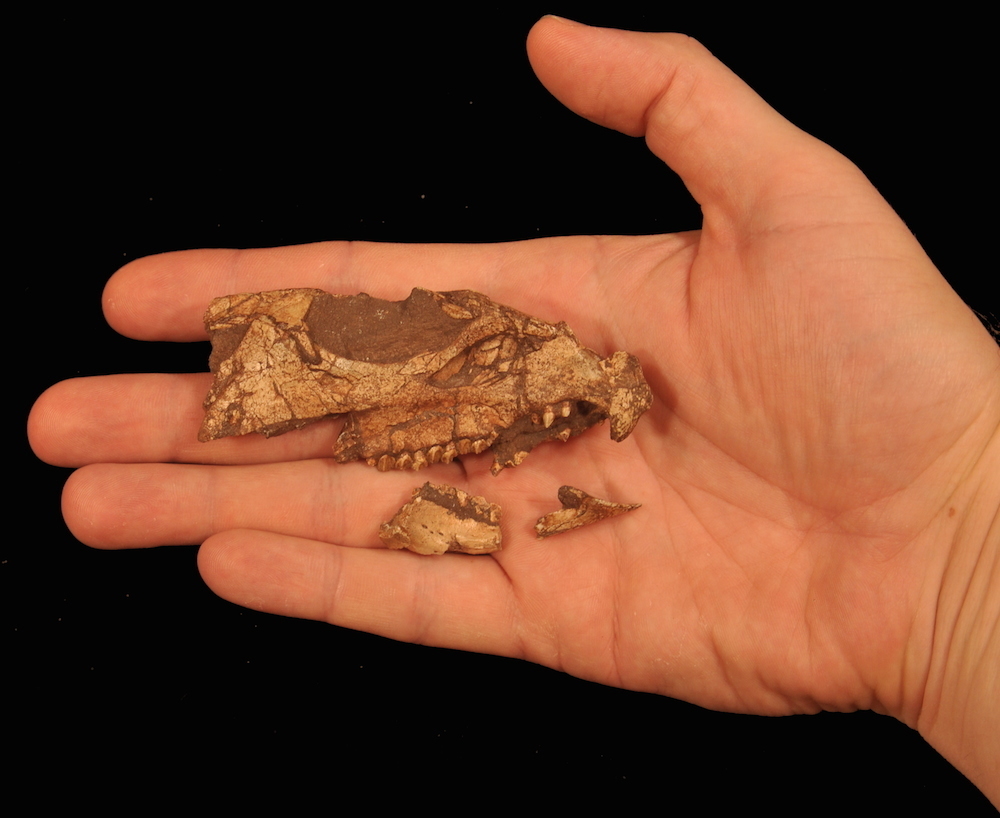
The fossil shows that the herbivorous Aquilops had a beak that likely helped it pluck vegetation from trees and plants, scissorlike teeth that sheared apart tough leaves and peglike teeth that chewed its fibrous meals. (Photo credit: Andrew Farke)
Follow Laura Geggel on Twitter @LauraGeggel. Follow Live Science @livescience, Facebook & Google+.

Laura is the archaeology and Life's Little Mysteries editor at Live Science. She also reports on general science, including paleontology. Her work has appeared in The New York Times, Scholastic, Popular Science and Spectrum, a site on autism research. She has won multiple awards from the Society of Professional Journalists and the Washington Newspaper Publishers Association for her reporting at a weekly newspaper near Seattle. Laura holds a bachelor's degree in English literature and psychology from Washington University in St. Louis and a master's degree in science writing from NYU.










